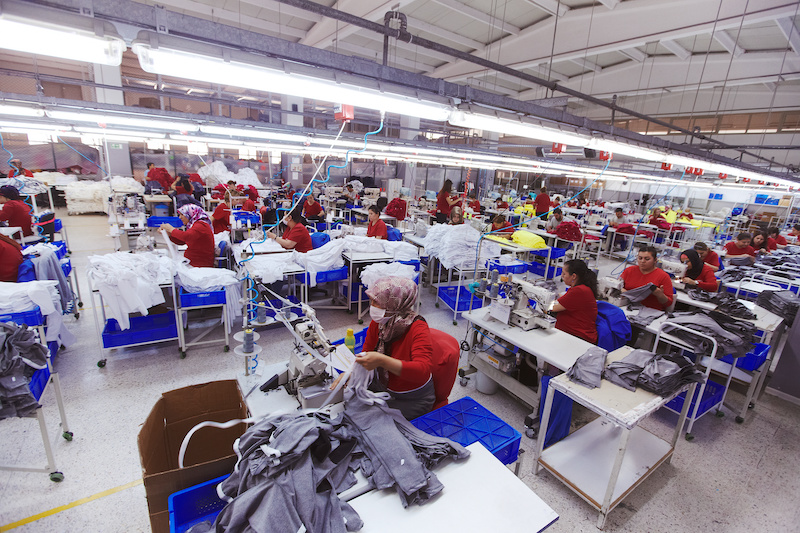Recommended

Blog Post
President Trump recently delegated authority—under the Defense Production Act—to the US International Development Finance Corporation (DFC) to support domestic production of medical equipment.
The Defense Production Act is a law dating back to the Korean War that allows the president to mobilize domestic private industry in support of national defense. When the president announced the order in a speech at a manufacturing center in Pennsylvania last week, he described DFC as an agency that “normally invests in economic development projects in other countries. I said how about investing in our country?”
During a time of unprecedented crisis all hands must be on deck to solve it, and there is considerable opportunity for DFC to step up. Without a mandated expansion, DFC is already positioned to help bolster US domestic production by focusing on resolving financing challenges in the global medical product supply chain. This—not capital for setting up and expanding US plants—has been a key constraint for US medical product manufacturers, since they depend on global markets for parts and components.
There’s considerable risk that the executive order’s focus on directly financing US production could prove to be an ill-fated move for DFC. It’s not clear that this new agency, or its predecessor, has a comparative advantage relative to other US government agencies, or the internal expertise and infrastructure to administer this type of program effectively.
Even though the Department of Defense will be responsible for financing the program, and the agency is expected to bring on additional staff to run this effort, it will be challenging for DFC to administer loans that could represent multiple amounts of its normal lending, given that the executive order waives normal limitations on loan volumes.
Moreover, it could distract the nascent agency’s attention away from its core mission of providing development finance to the world’s poorest countries at a time when they are also in the throes of a severe crisis. And without robust safeguards, financing decisions could be subject to political influence which would pose significant reputational damage to the new agency.
Better alternatives?
Air cargo capacity, export restrictions, and manufacturing closures in foreign countries due to COVID-19 are at the root of the large-scale disruption in the US’s global medical supply chain.
Since medical products—from PPE to a future vaccine—depend on components which are sourced from manufacturers all over the world, it is understandable that a stronger focus on supply chain resilience will require investments in US manufacturing.
Other USG agencies are better equipped to help ramp up US manufacturing of medical supplies. The Department of Health and Human Services (HHS) is uniquely positioned to help boost domestic manufacturing through purchasing contracts. And private capital will not be a constraint to setting up new manufacturing plants if HHS signals their intent to purchase more from US manufacturers (even if it comes as a price premium). The Federal Emergency Management Agency (FEMA), the Small Business Administration (SBA), and the Treasury Department also have a demonstrated track record administering emergency domestic investment programs and managing large scale procurement and contracts.
How DFC can help
DFC can best help COVID-19 relief efforts by sticking to its original mandate. It has an opportunity to resolve some of the immediate bottlenecks facing the US supply chain for COVID-19 medical supplies.
Through loans and credit guarantees to international suppliers, DFC can ensure that globally sourced ingredients, components, and parts are not a major constraint for US medical supply manufacturing. Such a role would leverage the financing instruments and geographical mandate of DFC and fits with its core competency.
Next Steps?
Given that the Executive Order is proceeding, DFC should move to adopt a series of measures to protect its core mission and safeguard its investments. Here are two proposals:
1. DFC should protect its core program by announcing an ambitious financing target for low- and lower-middle income countries.
The effort required to ramp up the US domestic program will inevitably divert attention from DFC’s senior leadership away from the agency’s core mandate of supporting private markets in the world’s poorest countries at a time when those countries and markets are also in crisis.
DFC is a new agency that is still in the process of building its internal structures and processes. Shifting focus to building a domestic investment arm, establishing the parameters of the program, and acquiring the staff with the expertise to administer it will be an extremely heavy lift. A public financing target for low and lower-middle income countries will help keep focus on that objective.
2. DFC should also seek to establish a transparent and robust allocation mechanism to shield funding decision from political interference.
The framework should clearly lay out parameters for how DFC will select domestic companies for financing. It should also include a commitment to report regularly on its funding decisions and how they are benefiting the public. Finally, it is imperative that the president move swiftly to appoint a credible Inspector General (IG) —since the DFC IG position is still vacant—to provide a measure of accountability over the program. The new IG was mandated by the BUILD ACT and the office has yet to be set up.
DFC would be wise to avoid becoming embroiled in beggar-thy-neighbor polices. Investing in economic projects in other countries is not antithetical to investing in America; on the contrary, COVID-19 is a stark reminder of how intertwined they are.
Disclaimer
CGD blog posts reflect the views of the authors, drawing on prior research and experience in their areas of expertise. CGD is a nonpartisan, independent organization and does not take institutional positions.
Image credit for social media/web: Adobe Stock





